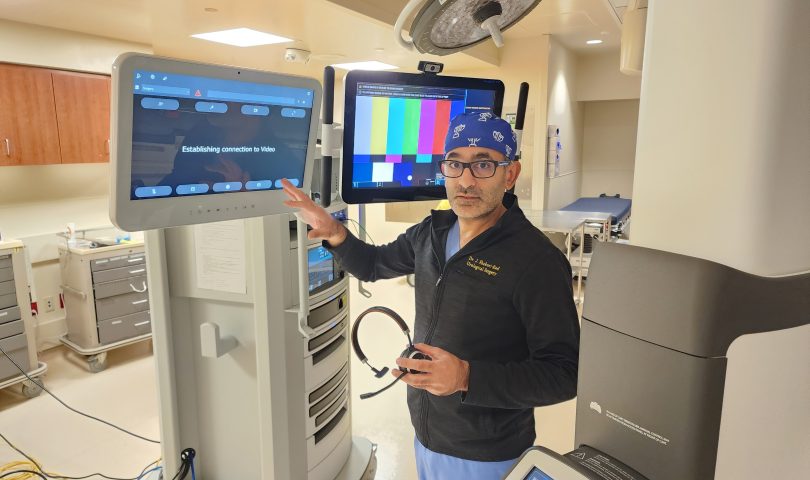MORGANTOWN — Mon Health Medical Center continues to push the cutting-edge of robotic surgery with the employment of the Intuitive robotic surgery hub.
Mon Health is one of fewer than 10 centers across the country — and the only one in West Virginia — to employ this touch-enabled system that allows surgeons from any location to watch a robotic surgery live, or view a recording later for an educational give-and-take on the procedure, said Dr. Jaschar Shakuri-Rad, a Mon Health urologist and the system’s director of robotic surgery.
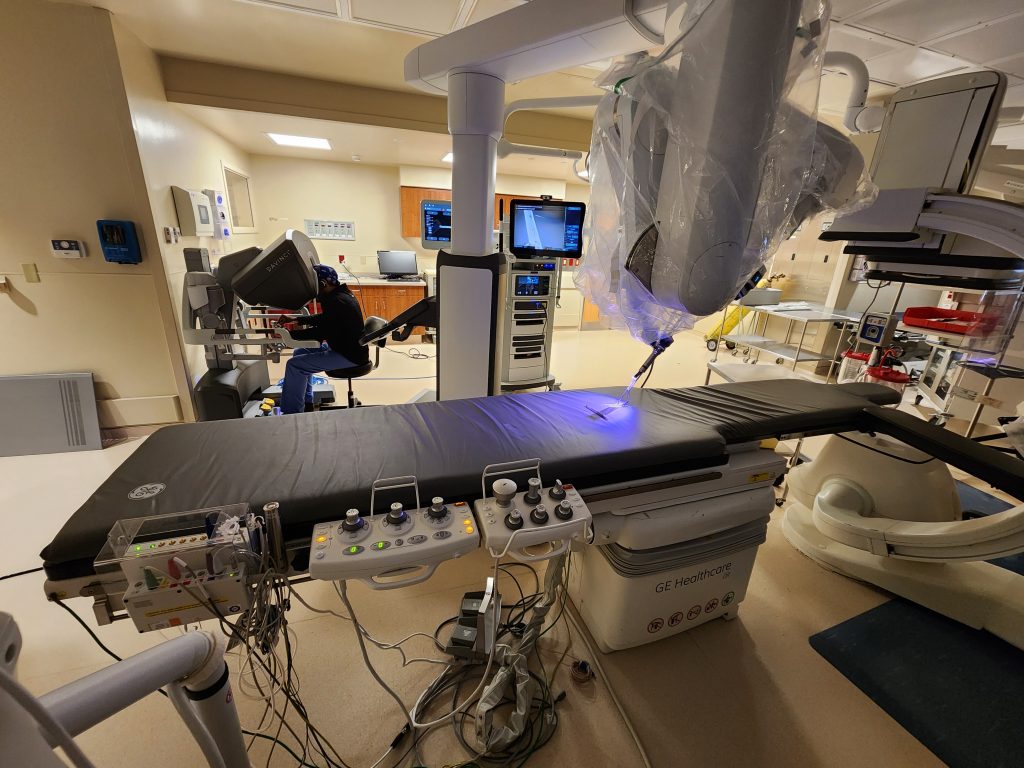
Mon Health has three robots on site, said Dr. Rad (as he’s called): two da Vinci Xi robots, which have four robotic arms and require four-to-five separate, small incisions for the procedure (Mon Health’s Preston Memorial also has one); and the even more cutting-edge da Vinci SP, a single-arm, single-port robot with three multi-jointed instruments and a fully wristed 3DHD camera for visibility and control in narrow surgical spaces.
The da Vinci SP allows Rad to perform a surgery such as a prostatectomy through a single 3-to-4-centimeter incision (just 1.2 to 1.6 inches).
Before explaining the Intuitive Hub, Rad talked about what brought him back to West Virginia and Mon Health back in 2018. He and his wife were both born and raised in the state, he said, and he was looking for an opportunity to introduce robotics here. “We wanted to bring some of this great technology and all the great research back from the places that I had learned how to do this.”
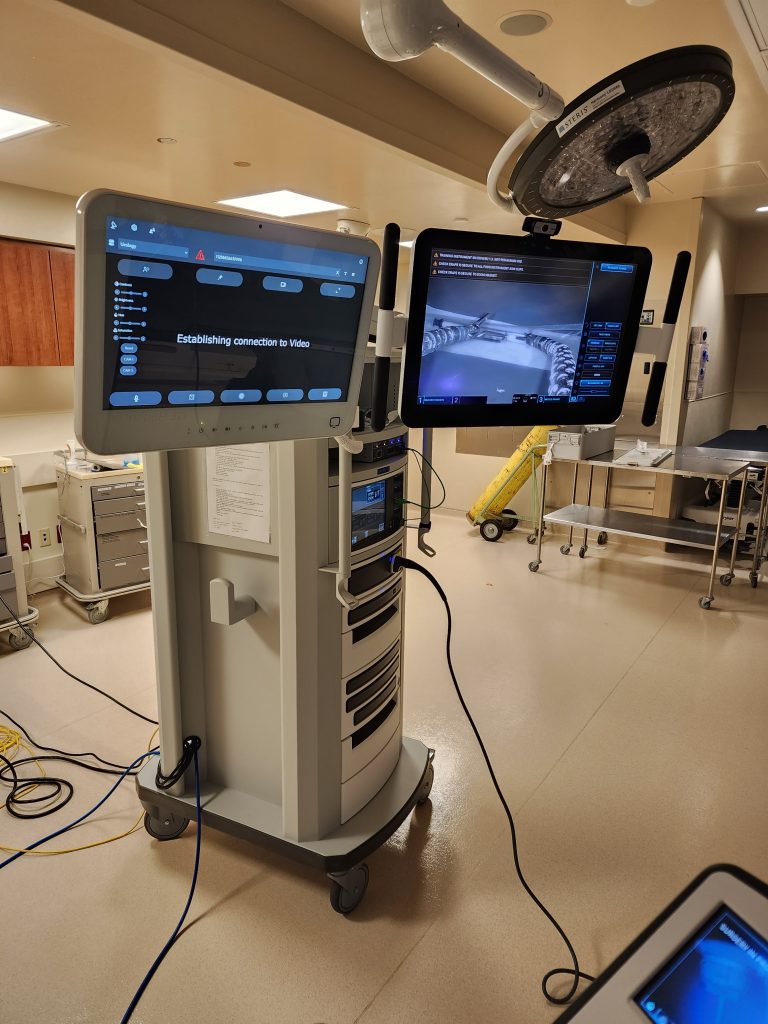
Mon Health had a robot in the closet he said, with a chuckle. “They wanted to see how they could get the robot out of the closet and put it to use. So, he started the urologic robotic surgical program to minimize minimally invasive surgery.
The hub includes a rolling computer stack with two screens — touch-sensitive screens that surgeons at either end can draw on to highlight areas of interest or concern.
The hub offers a number of opportunities, Rad said. “There’s a lot of good things coming out of it.”
Among them, it allows surgeons to collaborate live from different places. One day, he wanted to learn something specific from a surgeon in New Jersey. So Rad operated that day at Mon Health, then logged onto the hub (it’s secure and HIPAA-compliant) and watched his work: the robot inside the patient and the surgeon at the console.
Likewise, surgeons from outside Mon Health can log on and watch Rad or one of his Morgantown colleagues at work. The observer can toggle between camera views or see all of them at once.
The operating surgeon wears a headset that allows him to communicate with those logged on. They can ask questions, make comments, give advice.
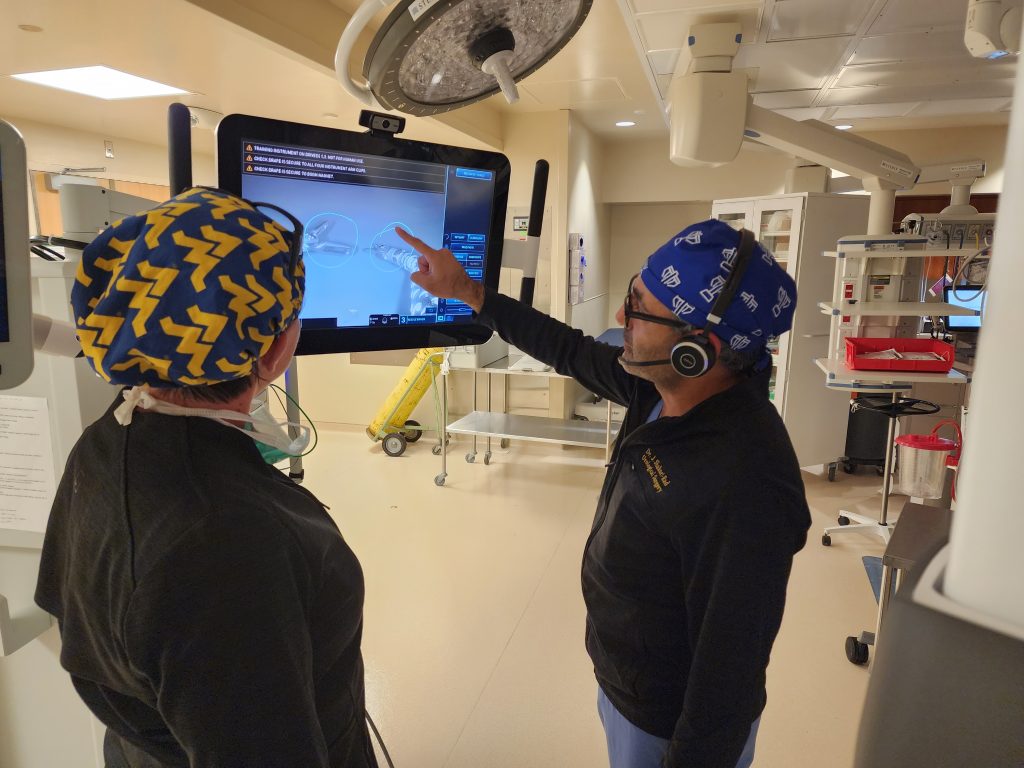
Rad said the hub can save precious time when time is of the essence. If one of his colleagues needs help or advice, instead of coming to Mon Health from wherever he is, suiting up and scrubbing in, he can log on with his phone or laptop and participate remotely with an up-close look inside the patient through the robot’s camera.
By using the hub to record cases and uploading them to a central server, Rad said, surgeons can mark specific times during the procedure where they want to ask questions or make comments about what was going on. The interchange helps educate the operating surgeon and the observers. “So the surgeon can always evolve and get better.” And, he said, it allows surgeons to stay where they are and serve their patients instead of flying off to conferences.
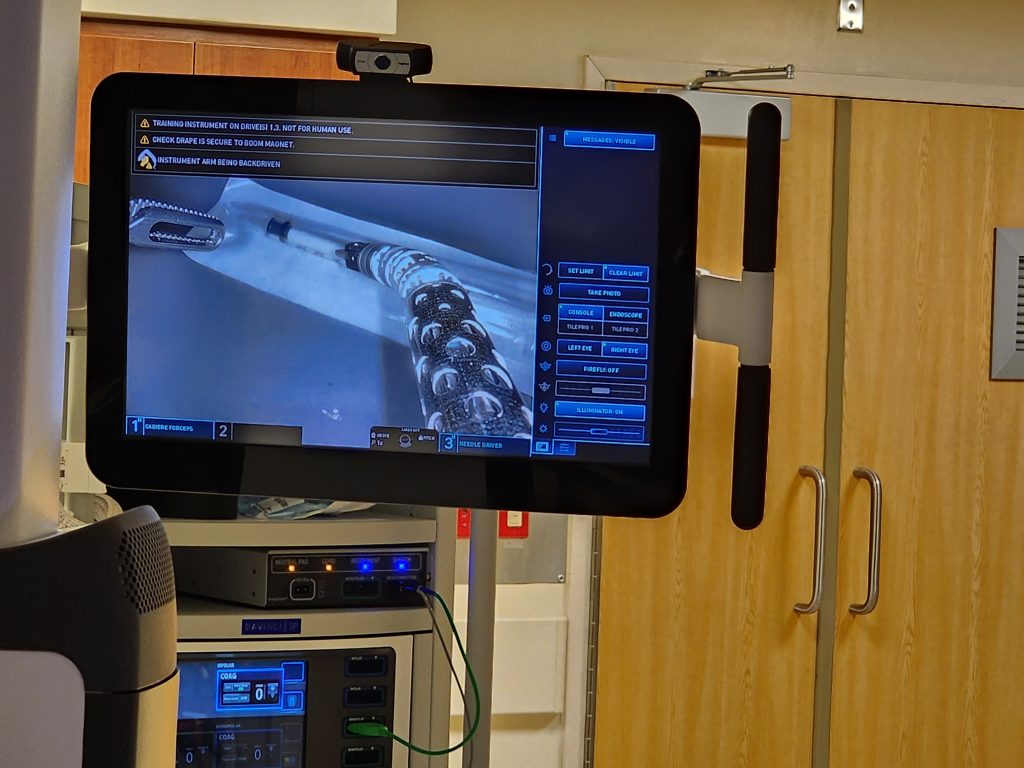
Intuitive developed the hub at the request of its customers, Rad said, but doesn’t own or operate it. Mon Health owns the hub equipment and participates in it with those who’ve also joined.
While relatively few centers are part of the network now, Rad said he expects more to join based on the benefits he offers.
“The hub system allows us to continuously evolve,” he said. A surgeon who wants to try something new can get help and support for all over the country. “All of a sudden you have multiple experts operating at the same time.”
What’s next
We talked with Rad and Mon Health Medical Center’s Chief Operating Officer Krystal Atkinson about what’s ahead for the robotics program.
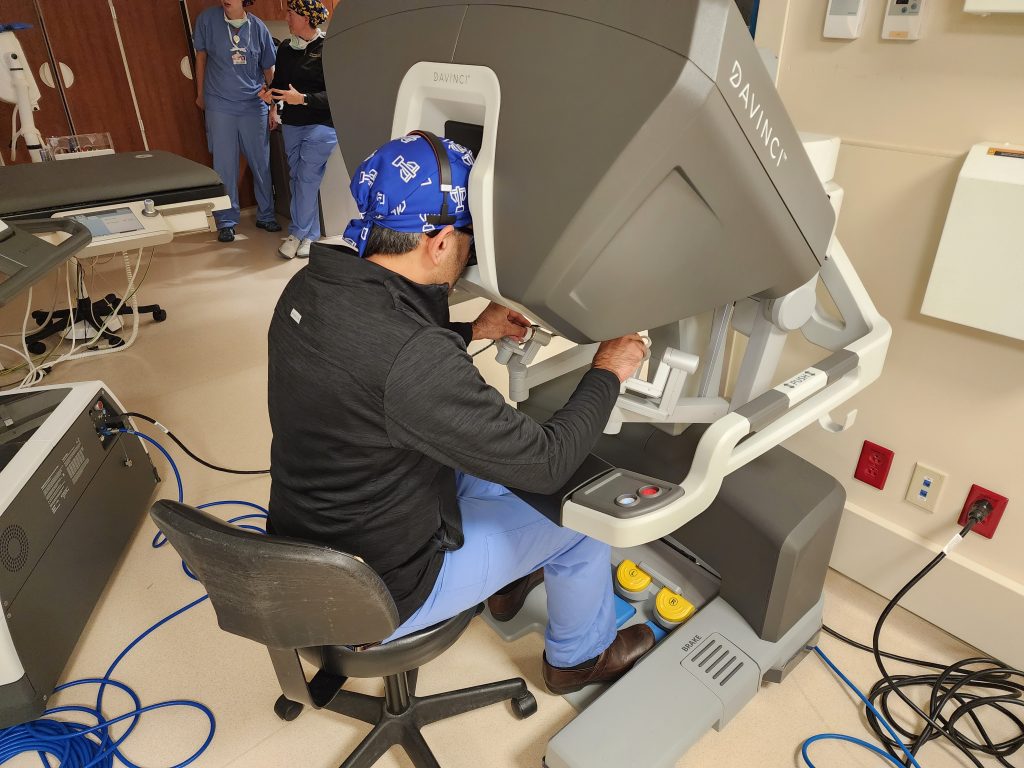
The robots are in use every day, Rad said. “All of our operating rooms are able to accommodate robotic surgery and the robot is mobile, meaning it can go into any of the rooms as needed.” And when they reach a point where demand grows, causing access to be limited, Atkinson will work to get more of them.
In the future, he said, they will have a room exclusively for the single port, which now gets moved from room to room. Right now, it can only be used for urology, but FDA approval for general surgery and gynecology are on the horizon.
Atkinson said they want to continue to expand the program, seeing more surgeons taking it up,
doing more surgeries and getting the staff trained to be available all seven days, not just Monday-Friday.
Patients get home quicker — hours instead of days — often with no need for narcotic pain relievers, just Tylenol, they said. This benefits the patients and frees up bed space in the hospital.
“We want to make sure that if we have this technology, we’re doing it across the board,” Atkinson said.
Another important goal, Rad said: “We’ve got to put West Virginia on the map.” People don’t think of West Virginia as a robotic surgery destination. “How do we change the narrative? We’ve got to show that we are really at the cutting-edge of this technology, at the treatments offered though these technologies.”
That’s already beginning, he said. With the da Vinci SP, some procedures done here are done at only a few centers across the country and people are taking note at conferences.
EMAIL: dbeard@dominionpost.com
TWEET @DominionPostWV

